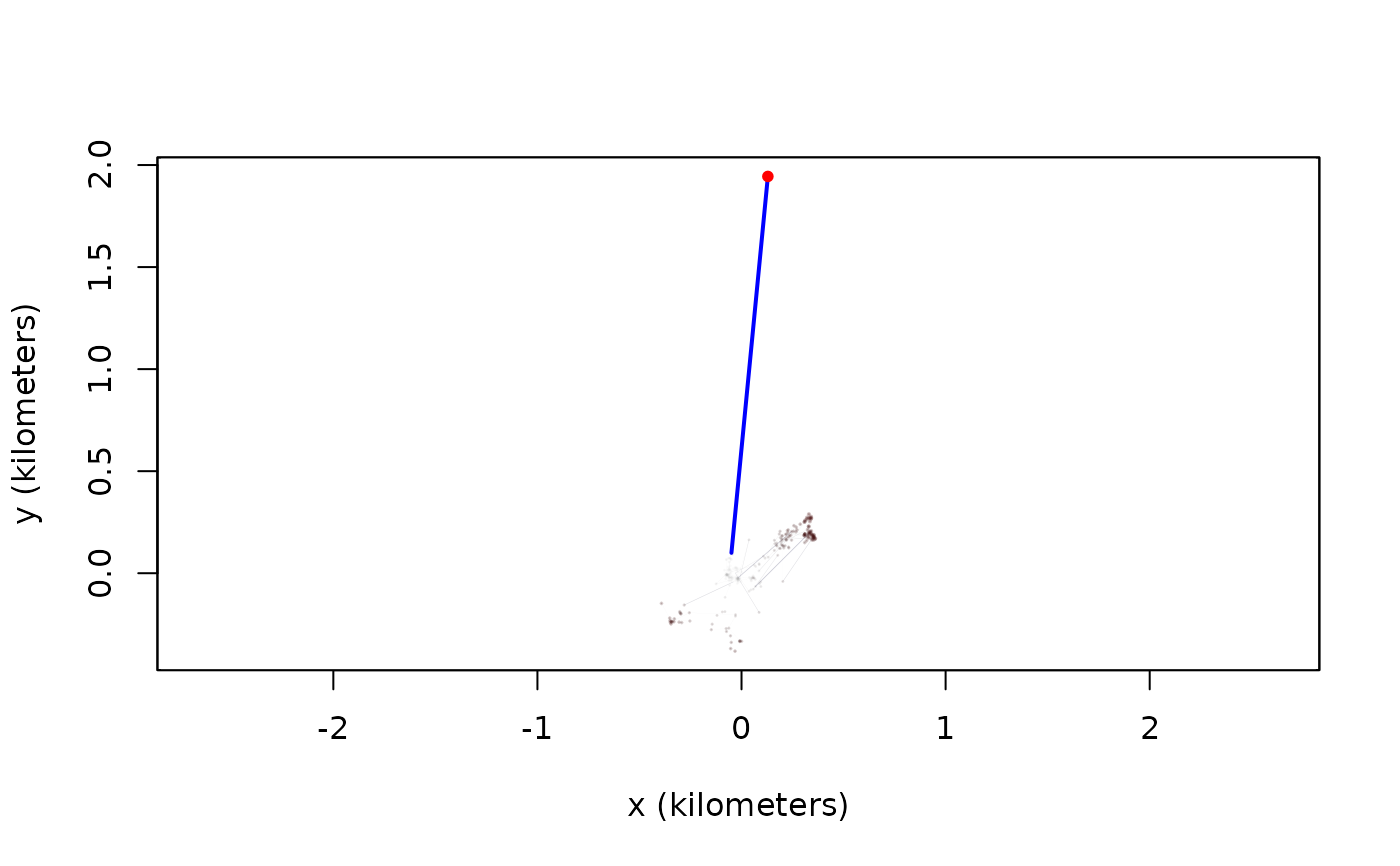Methods to facilitate outlier detection.
outlie.RdProduces a data.frame of speed and distance estimates to analyze, as well as a plot highlighting potential speed and distance outliers in telemetry data.
Arguments
- data
telemetryobject.- plot
Output a plot highlighting high speeds (blue) and distant locations (red).
- by
Color and size side-effect plot points by
'd','v','dz','vz', for distance from center, minimum speed, vertical distance from center, and minimum vertical speed.- ...
Arguments passed to
plot.- x
outlieobject to plot.- level
Confidence level for error bars.
- units
Convert axes to natural units.
- axes
\(x\)-\(y\) axes to plot. Can be any of
'd','v','dz','vz', for time, distance from center, minimum speed, vertical distance from center, and minimum vertical speed.- xlim
\(x\)-axis plotting range in SI units.
- ylim
\(y\)-axis plotting range in SI units.
Details
If plot=TRUE in outlie(), intervals of high speed are highlighted with blue segments, while distant locations are highlighted with red points.
When plotting the outlie object itself, `core deviation' denotes distances from the median longitude & latitude, while `minimum speed' denotes the minimum speed required to explain the location estimate's displacement as straight-line motion. Both estimates account for telemetry error and condition on as few data points as possible. The speed estimates furthermore account for timestamp truncation and assign each timestep's speed to the most likely offending time, based on its other adjacent speed estimate.
The output outlie object contains the above noted speed and distance estimates in a data.frame, with rows corresponding to those of the input telemetry object.
Value
Returns an outlie object, which is a data.frame of distance and speed information. Can also produce a plot as a side effect.
References
C. H. Fleming et al, ``A comprehensive framework for handling location error in animal tracking data'', bioRxiv 2020.06.12.130195 (2020) doi:10.1101/2020.06.12.130195 .
Note
The speed estimates here are tailored for outlier detection and have poor statistical efficiency. The predict and speed methods are appropriate for estimating speed (after outliers have been removed and a movement model has been selected).
In ctmm v0.6.1 the UERE argument was deprecated. For uncalibrated data, the initial esitmates used by outlie are now generated on import and stated by summary(uere(data)). These values not be reasonable for arbitrary datasets.

